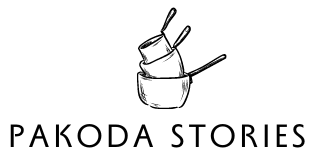In this post, I go over my own experiences with my child when we first began reading and how I overcame roadblocks along the way. Check out my top tips on how to encourage your preschooler to read in their beginning stages!
Tip #1: Talk To Your Child
As a first-time mother and someone who had never spent a lot of time around kids before I had my child, one of the biggest challenges I faced was just how to talk to babies. There are plenty of parenting classes offered by medical professionals and companies. But not one of them tells you how to talk to a baby.
They will tell you generic things that don’t necessarily teach you how to do it. They are simply tips like spending time with the baby, talking closer to their face, etc. But nothing on what exactly to say to a baby. Something as simple as that can be daunting for someone who has never had this experience before.
Tip #2: Use Visuals Over Words
When my daughter started reading 2+ years ago, I felt confident in teaching her to read. What I learned eventually is that children guide us and not the other way around. For some reason, I thought those simpler baby books were not good enough for my daughter. My expectations for her were high and I assumed books with text and minimal images were enough. No need to focus on visuals and use over-the-top expressions. Wrong. Focus on visuals and use over-the-top expressions. Obviously, this was something I would learn eventually.
Tip #3: Buy Simple, Age-Appropriate Books, Not Pulitzer Winners!
A phrase I like to use quite often about my daughter is “Oh, you’re a brand new model. Only 4 years old on this planet!” The reason I say this here is because children are fairly new to existing on this planet. Their understanding of things is still in the rudimentary stage. They do not have years of training and sculpting as we do. Those over-the-top expressions and fewer words help them grasp information in their still-forming brains! As simple as that!
Tip #4: It’s About What Your Child Wants. Not What You Want!
Tip #5: Allow Your Child To Pick Their Books
I spent time with her allowing her to pick books she liked. She picked the same books over and over again. Kids love repetition and being in charge. They feel a great sense of pride in making their choice and that’s the only way it should be! At least for the most part!
Tip #6: Finally, You Can’t Force Them To Read
Now and then, I pick a book I like. Books that will spark a conversation. If it’s glitter and unicorn and pink splat that gets her attention, that’s what we’re reading. If it’s rockets and ninjas and cops that get her attention, then that’s what we’re reading. At the end of the day, the only thing I want in return is the book’s ability to get my child excited and eager to talk about it!
To conclude — It doesn’t matter if your child reads at ages 2 or 8. What matters is that you can never get your child to do anything they don’t want to do. Nor do you have to! Provide the necessary resources and allow for things to naturally happen.

A book that I highly recommend. Check out my review!
Books that my daughter loves in order of reading level.
- Sight Word Readers – Believe it or not, my daughter started to read these at age 2.5. She could easily connect words by looking at pictures. The Sight Word Readers invited her to the world of reading. Until then, she loved read-alongs with me. But these truly graduated her into a reader.
- First Little Comics – As a little kid, I remember being attracted to comics over novels. The cartoonish illustrations and tiny blurbs helped my little mind grasp the information easily. First Little Comics has super cute pictures and delves into concepts such as opposites, emotions, etc. Excellent for true beginners!
- Bob Books Set 1 – These books have high reviews among parents of beginner readers for a reason. Bob books are simple books that have an actual little story unlike others that pretty much describe a picture. Each page has 2-3 words max. Each word is mostly 3-letters long. They also have a great rhyme scheme. This helps in engaging the reader. If you are looking for beginner reading books with a story to them, these are pretty good!
- Step into Reading Level 1 – Any book from Step into Reading has a nice story. They are typically 32 pages long and introduce different concepts with each book. They also indulge your little reader with rhyming sentences. Captivating illustrations and catchy phrases make these an awesome addition to your little one’s collection!
- First Little Readers Level A – Anything from the “First Little” series is a win in my opinion. This set comes in 25 little books with short 2-word sentences. They introduce and use repetition to help children learn a new word with each book. These books are great for little ones that are already starting to read! Reading is a lot of fun and should be more about exploration in their beginning years. It should be about less about what your child is capable of and more about what they want to do. If your child wants to read, load them up with books! It is important to provide them with a positive experience as the beginning years will be a foundation for their reading habit in the coming years. The last thing we want to do is traumatize our child with our over-the-top enthusiasm!
Hope these tips help you as you embark on your child’s journey into reading! Happy Reading!
